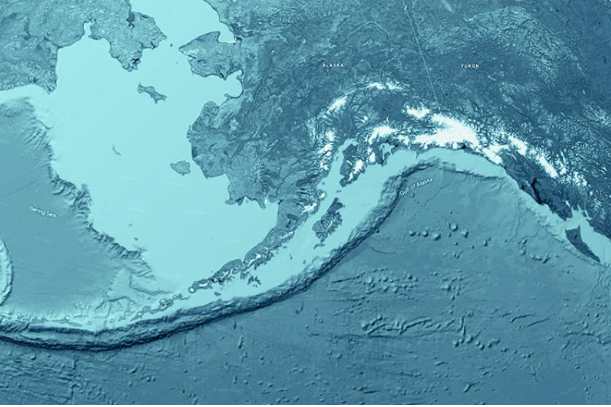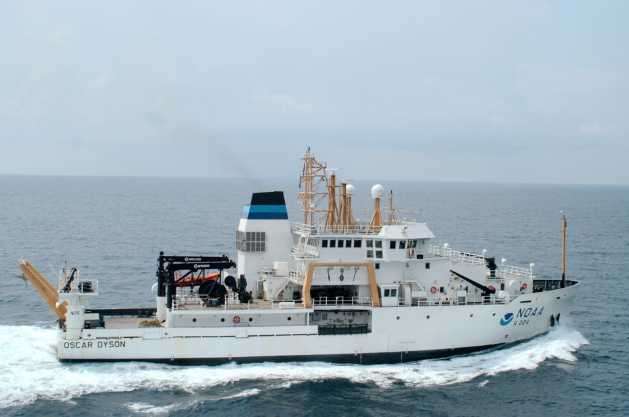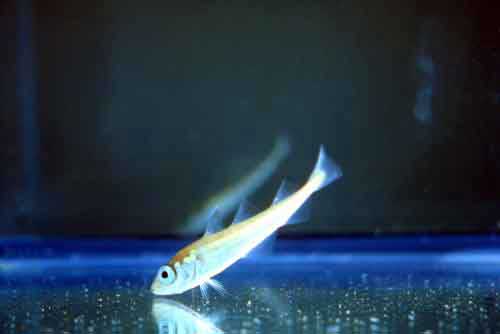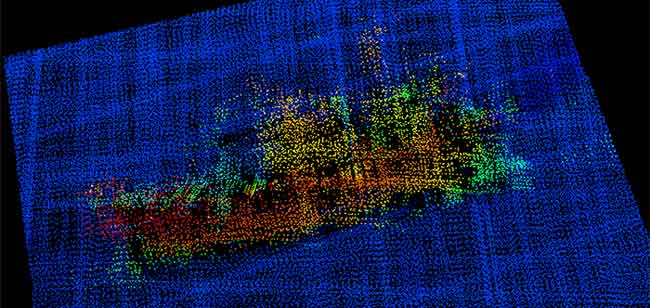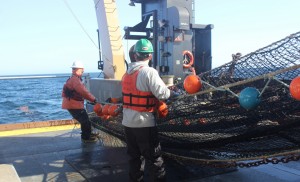
“Start haul back,” the NOAA Corps watch officer says to the fisherman operating the winch controls. The officer monitors the helm and navigation settings to maintain a smooth ride while the fisherman, a NOAA wage mariner, begins the slow process of reeling in a trawl net from the depths.
They’re aboard NOAA Ship Oscar Dyson in the Gulf of Alaska, conducting a research survey to estimate the number and health of juvenile pollock. Pollock is one of Alaska’s most important commercial fisheries, and this assessment gives fishery managers a heads-up on how healthy the pollock will be by the time this year’s juveniles grow to commercial harvest sizes at age three.
An earlier survey in May sampled pollock during their larval stage. Pollock from this newborn generation have been growing through the summer into juveniles, and this new survey is timed as the juveniles are approaching their first winter.
NOAA Fisheries biologist Steve Porter, chief scientist of the survey, explains, “Food becomes more scarce during the winter, so it’s key for the juveniles to fatten up enough to survive their first winter.” A high rate of survival over the first winter serves as a good indicator for the health of the overall pollock population.
For two weeks, the Oscar Dyson zigzags its way to sampling locations along the south side of the Alaskan Peninsula. At each station the ship tows the trawl net down to ten meters above the continental shelf bottom.

As the net gets winched back on board, the scientists put on their rubber boots and fishing coveralls. A few minutes later, they empty the net’s catch onto a sorting table where they begin digging their arms into the pile of fish and jellyfish. The scientists count, measure, and weigh the different species. They preserve pollock juveniles for analyses of their diet and fat content back at the lab.
The juveniles haven’t been turning up in great numbers on this survey — Porter says the counts are rather low compared to prior years. He also notes, with a hint of concern, that the water is noticeably warmer. This could be consistent with a pattern of ecosystem imbalance being observed along the West Coast, from California to Alaska.
NOAA scientists need to do a full analysis of the survey data, and feed the results into a model for ecosystem-based fisheries management. In the meantime, the crew and scientists of the Oscar Dysonhave more work to do.
“You’re free to maneuver,” the fisherman radios back up to the watch officer, indicating that the work on the outer deck is complete. The officer works the controls to turn the ship in the choppy Alaskan waters. He sets a new course and brings the ship up to full speed. Off to the next trawl location.[xyz-ihs snippet=”Adsense-responsive”]




